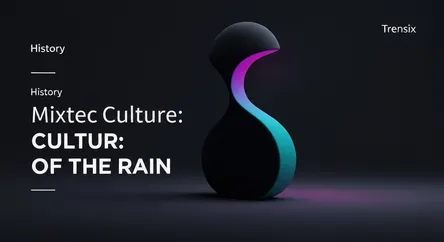History
Mixtec Culture: People of the Rain

Explore the rich history of the Mixtec civilization, renowned for their intricate metalwork, unique codices, and enduring cultural legacy in Mexico.
What is it?
The Mixtec culture was a prominent pre-Columbian Mesoamerican civilization centered in the La Mixteca region of modern-day Mexican states Oaxaca, Guerrero, and Puebla. Known as the Ñuu Savi, or "People of the Rain," their civilization spanned from the Middle Preclassic period until the Spanish conquest in the 16th century. Unlike a centralized empire, the Mixtecs were organized into numerous independent kingdoms or city-states. They were master artisans, famous for their exceptional metalwork with gold and silver, intricate pottery, and turquoise jewelry. The Mixtecs also developed a unique logographic writing system, recording their genealogies, histories, and myths in screen-fold books called codices, some of which have survived to this day.
Why is it trending?
Interest in Mixtec culture is growing due to a broader appreciation for Indigenous histories and a push for cultural revitalization. Scholars continue to decipher their complex codices, revealing new insights into Mesoamerican history and belief systems. Furthermore, Mixtec communities today are actively working to preserve their languages and traditions. The unique political structure of interconnected kingdoms, rather than a single empire, also offers a fascinating case study for historians and archaeologists. Their artistic legacy, particularly their detailed jewelry and metalwork, remains highly influential and is studied by artists and designers worldwide.
How does it affect people?
The legacy of the Mixtec culture endures through its descendants. Today, the Mixtec people are one of Mexico's largest Indigenous groups, with a population of around 500,000 who continue to speak Mixtecan languages. Many contemporary Mixtecs maintain strong ties to their ancestral lands and traditions, blending ancient beliefs with modern practices. Their agricultural methods and crafts, such as pottery and textile weaving, are still practiced. As many Mixtec people have migrated to find work, they have formed communities in other parts of Mexico and the United States, bringing their vibrant culture and traditions to a wider audience.